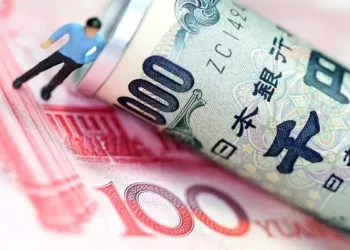The euro extended its gains against the British pound for a third consecutive session on Monday, with the EUR/GBP pair trading around 0.8670 during Asian hours. The cross benefited from a rebound in risk appetite following US President Donald Trump’s announcement of less severe tariffs on Chinese imports, easing fears of a deepening trade conflict.
Trump clarified late Sunday that semiconductors and electronics from China would remain under existing 20% tariffs linked to fentanyl policy, rather than facing the previously proposed 145% rate. The news reassured markets and sparked moderate relief in global risk assets, supporting the euro.
Merz Criticizes Trump Policies, Backs Transatlantic Trade Reset
Adding to the political dimension, German Chancellor-in-waiting Friedrich Merz voiced concern over the potential consequences of Trump’s economic strategies. In an interview with Handelsblatt on Saturday, Merz warned that “President Trump’s policies are increasing the risk that the next financial crisis will hit sooner than expected.” He also backed a new transatlantic trade agreement, suggesting that “zero percent tariffs on everything—that would be better for both sides.”
Pound Sterling Remains Resilient on Strong Gilt Yields and Growth Surprise
Despite the euro’s recent strength, the pound found some counterbalance through rising UK gilt yields and robust domestic data. The yield on 10-year UK government bonds rose to 4.76% amid persistent global bond market volatility, largely driven by mounting US-China trade tensions. China’s Ministry of Finance on Friday announced a sharp increase in tariffs on US goods—from 84% to 125%—in retaliation to President Trump’s earlier decision to hike tariffs on Chinese imports to 145%.
Meanwhile, economic data from the UK surprised to the upside. The British economy expanded by 0.5% in February, the fastest pace in nearly a year. Growth was broadly based across sectors and partly attributed to a surge in manufacturing activity ahead of anticipated tariffs. The stronger-than-expected print prompted markets to reevaluate the trajectory of monetary easing by the Bank of England (BoE), though three quarter-point rate cuts are still priced in for the year.
Related Topics:























